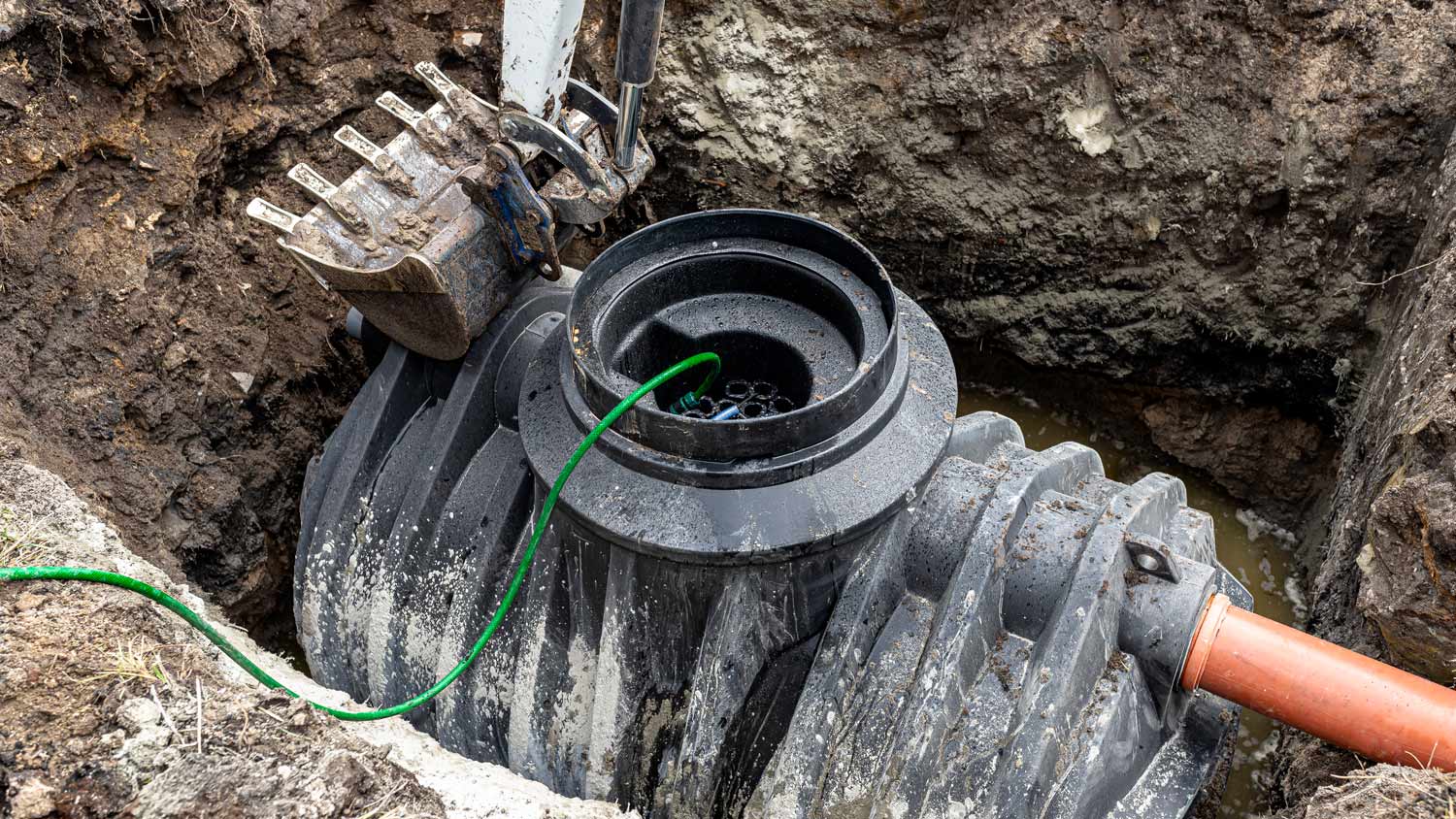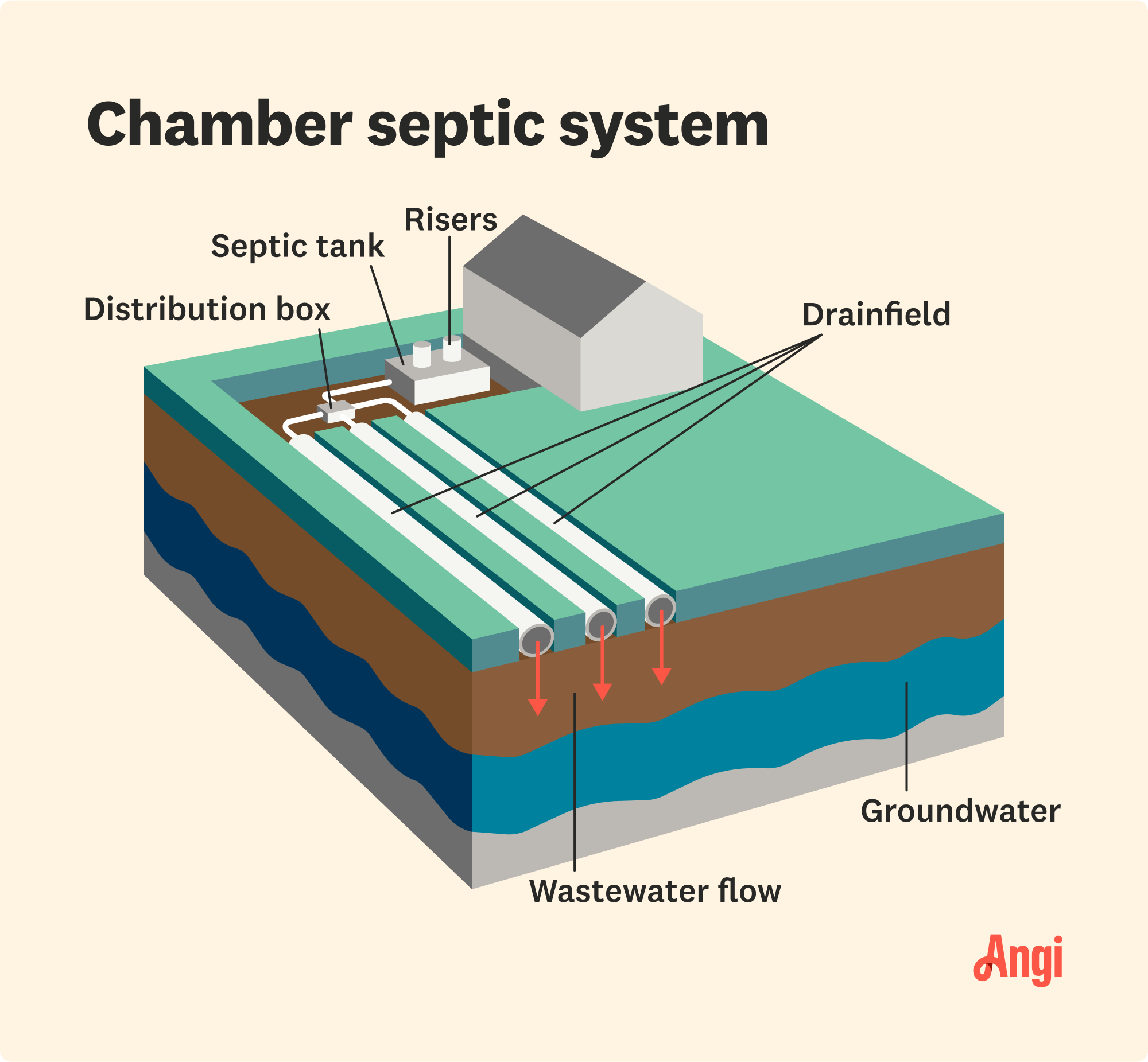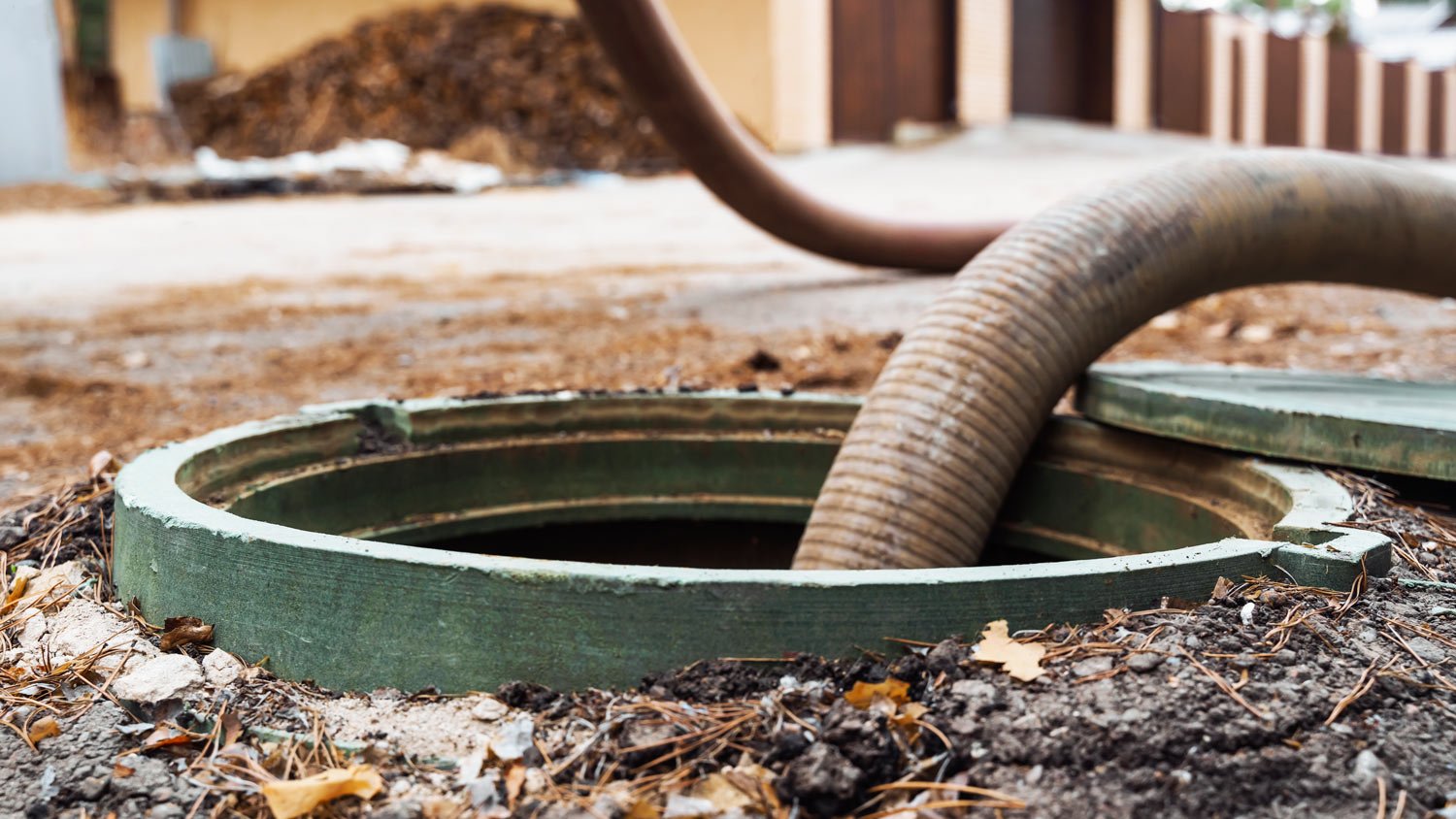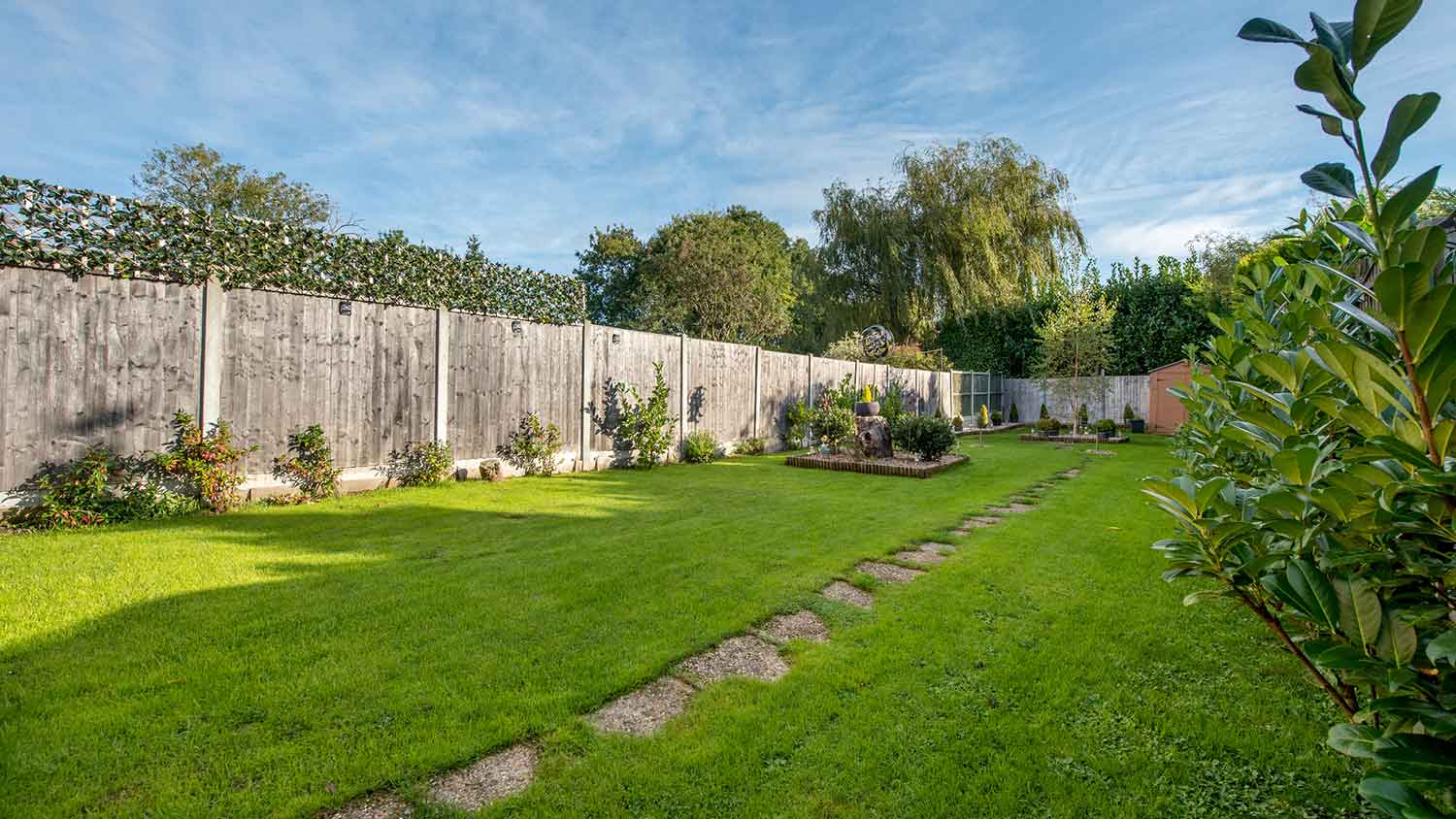
Does your property have poor ground water or soil conditions? Learn about engineered septic system cost, types, and factors for you to consider.
Could this be the right type of septic system for your home?


A chamber septic system uses chambers rather than gravel in the leach field.
This system is often easier to install than a conventional septic system.
Chamber systems need the septic tank pumped every three to five years.
A chamber septic system costs about $5,000–$12,000.
You may not spend a lot of time thinking about where your wastewater goes once it swirls down the drain. But if you live on a property that isn’t connected to your local wastewater treatment center, you’ll need to spend a lot more time choosing the right septic system—and caring for it. If you’re considering a chamber septic system, here’s everything you need to know, from how it works to what it costs for installation and maintenance.

The chamber system is one of many types of septic systems that work best for homes with high water tables. This septic system uses a series of chambers, which are like pipes that are open at the bottom and have slits in the side, to release partially treated wastewater (called effluent) into the soil for further treatment. This is a gravelless septic system option, so it may be beneficial for properties where it can be hard to source or deliver gravel.
If you have a septic system, your wastewater is stored, filtered, and treated right on your property, rather than flowing through a main sewer line and directed to a municipal wastewater treatment center.
After you wash your hands, flush a toilet, or take a shower, the water goes down the drain and into your home’s plumbing pipes. From there, the wastewater is carried into a septic tank, where solid waste is separated from the liquid wastewater. Solid waste settles to the bottom and needs pumped out occasionally, usually every three to five years.
Then, the wastewater flows to what is called the leach field or drain field. In a conventional septic system, the leach field has gravel-filled trenches for the wastewater to drain into, and bacteria helps further treat the wastewater before it is released into the soil for final treatment and disposal.
In a chamber septic system, there is a series of chambers instead of gravel trenches. Wastewater flows into the chambers, which are open at the bottom to release the water into the soil for further treatment.

A chamber septic system is common for properties where accessing gravel and/or having gravel delivered is too difficult or expensive. For instance, if you live in a mountainous area or remote area that is hard to access with heavy machinery, switching to the chamber system may be easier.
A chamber septic system may be useful for areas with less space, because some states allow the leach field for a chamber system to be up to 50% smaller than a conventional leach field.
Chamber septic systems are common for areas with high water tables, and they can also be useful for homes with varying water usage, like vacation homes. That’s because the chambers are larger, making more storage for wastewater and stormwater alike and giving the effluent more time to disperse into the ground and be treated by bacteria in the soil.
A chamber septic system can work well for certain properties, but it’s not always the best septic system option for every home. There are some benefits and challenges to installing and maintaining a chamber septic system.
Easy to install
Low upfront cost
Good for small lots
A chamber septic system is easier to install than other types of septic systems, including conventional systems. This makes them a less expensive alternative to some septic systems, such as drip distribution systems (which cost $8,000 to $18,000), evapotranspiration systems ($10,000 to $15,000), or mound systems ($10,000 to $20,000).
Because of the design of the chambers, which increase storage space, chamber septic systems work well for smaller lots or properties with a high groundwater table.
Another unique benefit to a chamber septic system is that the chambers can often be made from recycled materials, making the system more eco-friendly.
Location affects cost
Not cost-effective if gravel is readily available
Not ideal for sandy soil
While chamber septic systems cost less than several other alternative septic system options, they aren’t always the best for your budget, particularly if you live somewhere with easy access to gravel. While chamber system installation starts at around $5,000, a conventional system starts around $3,460 to install.
The effectiveness of a chamber septic system can also depend on the soil type. Although a conventional septic system works best with loamy soils, chamber septic systems are often ideal for clay soils that can be broken up by the chambers, and they may not be ideal for sandy soils.

Like with any septic system, there are a few best practices to prevent flooding, foul odors, groundwater contamination, or sewage backing up into your home’s plumbing.
First, it’s important to hire a local septic tank company to pump the septic tank at least every three to five years. This process involves using specialized equipment to remove the sludge, or solid waste, from the septic tank that builds up over time. This prevents sewage and wastewater from backing up into your home’s drains.
You may be tempted to flush cleaning wipes down the toilet or throw the spent cooking grease from last night’s dinner down the drain, but these types of waste can lead to clogs in your pipes or further down the septic system. And flushing or pouring chemical cleaners down the drains could harm the helpful bacteria in your septic system. Only flush human waste and toilet paper, and take care not to pour grease, oils, cleaners, or coffee grounds down your drains. Instead, absorb them with paper towels and toss it in the trash.
Be sure that you aren’t driving or parking vehicles over the leach field. The chambers can be vulnerable to the added weight of a vehicle, and they could collapse from the pressure. This puts the driver at risk if the ground caves in, and this will lead to costly damage for the septic system and the vehicle.
While a chamber septic system can effectively handle rain or stormwater, it’s best not to allow a lot of water around your property to drain into the leach field. Otherwise, the system can’t effectively treat and disperse the wastewater. Make sure downspouts are pointed away from the leach field, and if you live in a wet climate, you may want to consider digging trenches that direct rain away from the leach field.
Installing a chamber septic system costs about $5,000 to $12,000, compared to the cost to install a conventional septic system, which can range from around $3,460 to $22,500. About every three to five years, you’ll also need to pay for the cost to pump a septic tank, which is about $175 to $600.
Finally, you may consider septic tank landscaping ideas to disguise or mark the ground above the septic tank, and this will cost about $5 to $25 per square foot. When landscaping around a septic system, it’s important to position plants far enough away to prevent their roots from growing into the pipes.
From average costs to expert advice, get all the answers you need to get your job done.

Does your property have poor ground water or soil conditions? Learn about engineered septic system cost, types, and factors for you to consider.

Size, materials, and labor all determine the costs of an ejector pump replacement. Follow this guide to help you find the right ejector pump for your budget.

How much does a septic system cost? Explore impacting factors, important add-ons, and how you can save money on septic system installation right here.

Septic tanks are kept underground, so checking the levels inside can be a challenge. Learn how to check if a septic tank is full with this guide.

Cleaning out clogged or dirty septic field lines is a quick job for a seasoned pro. Learn what makes up the total cost to clean septic field lines

Got a septic tank? Then you've got a leach field. Knowing where it is helps you maintain your system. Here's how to find a leach field.